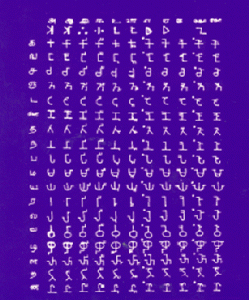
Inscriptions languish as the number of epigraphists dwindles
On April 28, the Ministry had declared that the Archaeological Survey of India (ASI), a body that carries out archaeological research, and responsible for conservation and preservation of monuments, will be restructured. On June 16, the ASI issued an order stating that as part of the cadre-restructuring process 758 new posts were being created. This was being done since 304 vacant posts had been abolished. Out of 758 posts, not even a single post has been allotted for epigraphists. Despite the fact that key excavations have been happening in places such as Keeladi in Tamil Nadu.

India’s historical monuments are rich with information about civilisations that had thrived in the past. The country’s diverse regions and culture mean that each region was ruled by different kingdoms. But how does one learn about who ruled which place? Or, who built what and when? How can one find out why a king distributed land to a particular temple or an individual?
How can one understand the past, know what had transpired so that we know why and how we are here?
This can be done by discovering, reading and deciphering inscriptions. People who are specialised in reading inscriptions made on stones and copper plates are known as epigraphists. Epigraphy helps us to reconstruct the history and culture of ancient civilisations. But it appears that such a vital field of study is being overlooked by the Union Ministry of Culture.
On April 28, the Ministry had declared that the Archaeological Survey of India (ASI), a body that carries out archaeological research, and responsible for conservation and preservation of monuments, will be restructured. On June 16, the ASI issued an order stating that as part of the cadre-restructuring process 758 new posts were being created. This was being done since 304 vacant posts had been abolished.
Also read: Stalin’s charge on archaeologists’ appointment baseless: Candidates

The massive cadre-restructuring exercise and the creation of new posts have come in the wake of the establishment of new seven ASI circles across the country in 2020. While that is understandable, what is shocking is that out of 758 posts, not even a single post has been allotted for epigraphists. Despite the fact that key excavations have been happening in places such as Keeladi in Tamil Nadu.
Epigraphist S Rajavelu, a former professor, department of maritime history and marine archaeology, Tamil University, Thanjavur, was unhappy with this move by the Union government. India already suffers from an insufficient number of epigraphists, he lamented.
According to Rajavelu, as of now, there are only 23 epigraphists across India. With this meagre workforce, the process of copying, deciphering and publishing the inscriptional wealth is moving at a snail’s pace.
“Hence, the government should have created at least 100 to 120 posts for epigraphists. But what has happened is just the opposite, the government has completely disregarded the epigraphy wing,” he said.
The ASI was founded in 1861 by Major General Sir Alexander Cunningham, a British army engineer. During the research carried out under the leadership of Cunningham, the Britishers discovered plenty of inscriptions in every nook and corner of the country. In order to study the inscriptions, a separate epigraphy branch was formed by a German scholar Dr Hultzsch in 1886.
“Between 1886 and now, nearly 1 lakh inscriptions were found across the country. Out of which, 30,000 to 35,000 inscriptions have been deciphered and published until now. The remaining inscriptions are still languishing due to the lack of insufficient staff,” claimed Rajavelu.
It is interesting to note that the directorate of epigraphy headquartered at Mysuru has zonal offices in Lucknow and Chennai. Epigraphists alleged that though Chennai has an epigraphy wing, research in Dravidian inscriptions is taking a back seat and interest is gradually waning due to the lack of epigraphists.
Su Venkatesan, an MP from Madurai too protested stating that by not creating new posts for epigraphists, the government was striking a big blow to the study of history and archaeology.
Also read: Tirumala Devasthanam says Hanuman was born at Tirumala Hills, not Hampi
He also raised the issue in a tweet pointing out whether the epigraphy wing was being neglected due to the fact that more than 70 per cent of inscriptions were in Dravidian languages.
S Ramachandran, a retired epigraphist from Tamil Nadu State Archaeology Department, however, did not concur with the view that the country was suffering due to the lack of epigraphists in the ASI department.
A large number of freelance epigraphists were making a lot of headway and publishing their discoveries, he pointed out.
“The state government is running a separate course on epigraphy. Besides, NGO’s like REACH in Chennai is providing training in epigraphy. The Tamil Nadu Archaeological Society regularly brings out a publication called ‘Aavanam’ every year. Historians like R Kalaikkovan run a monthly web magazine named ‘Varalaaru’, which carries a lot of articles on inscription discoveries,” he said, adding that the fear of the lack of epigraphists is basically unfounded.

Officials of the ASI offices in Tamil Nadu were not available for comment. However, a highly-placed source in the ASI admitted that since the Director General level officers were from IAS cadres, they did not have basic knowledge of archaeology and epigraphy.
The official also added that out of 758 posts, about 434 posts have been conceived just for conservation assistants. It is not necessary to have such a large army of conversation assistants, pointed out the official.
Further, the official said as the estampages of inscriptions (paper impressions of the inscriptions) were becoming fragile, the work of digitisation of 74,000 inscriptions have to be taken up as on an urgent basis. Also, due to developmental works, quarrying and mining, the country was losing out on discovering many inscriptions.
“Before they disappear completely and get buried, the process of copying, deciphering and publishing of the inscriptions must be carried out. But we are unable to do this because of the lack of staff,” stressed the official.
Already, representations on this issue have been made to the Union ministry by officials and other renowned historians. But they have turned a deaf ear and not paying any heed to our concerns, said the official.


